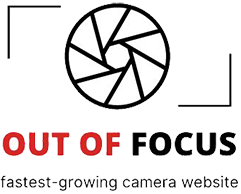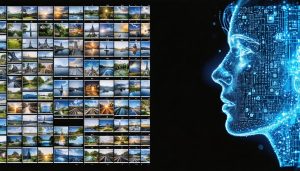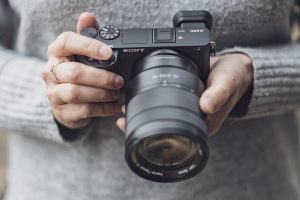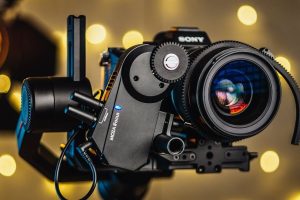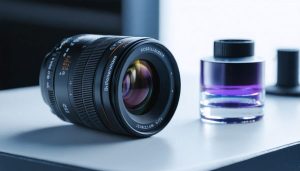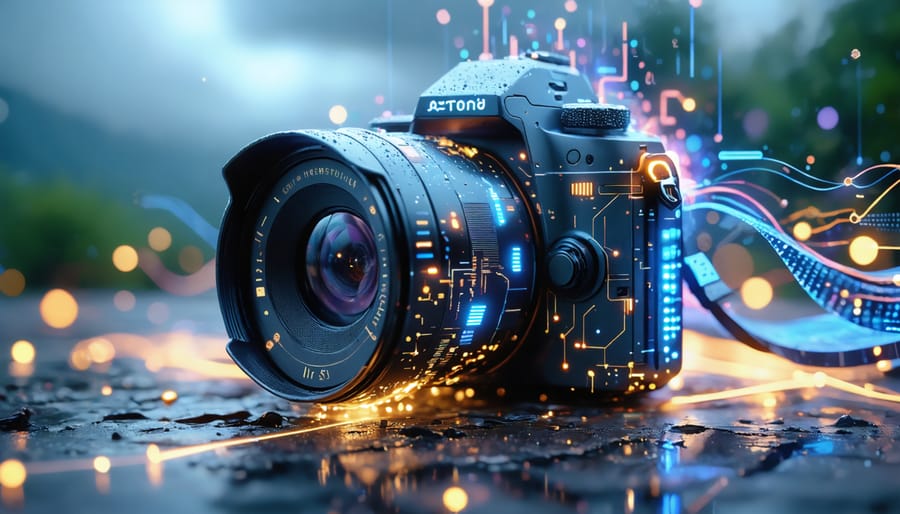
The revolution in camera technology isn’t just about megapixels anymore. Today’s cutting-edge cameras are pushing the boundaries of what’s possible, merging artificial intelligence with advanced sensor technology to transform how we capture and experience moments. From computational photography that can turn night into day, to 8K video capabilities that rival professional cinema cameras, the latest innovations are redefining the intersection of art and technology.
In 2024, we’re witnessing groundbreaking advances in mirrorless systems, with cameras that can track subjects using AI-powered algorithms, predict movement patterns, and adjust settings in real-time. Smartphone manufacturers are incorporating multiple lenses and sophisticated image processing chips that challenge traditional camera systems, while professional-grade equipment now features enhanced connectivity options and cloud integration that streamline workflow like never before.
Whether you’re a seasoned professional or an emerging creator, understanding these technological leaps isn’t just about staying current—it’s about embracing tools that expand creative possibilities and deliver unprecedented image quality. From computational RAW processing to advanced stabilization systems, today’s cameras aren’t just capturing images; they’re opening new frontiers in visual storytelling.
AI-Powered Photography Takes Center Stage
Real-Time Subject Recognition and Tracking
Modern cameras are revolutionizing the way we capture subjects through sophisticated real-time recognition and tracking systems. These AI-powered features can identify and track multiple subjects simultaneously, maintaining sharp focus even in challenging conditions.
Take sports photography, for instance. Today’s advanced cameras can lock onto an athlete’s eye or face and maintain focus as they sprint across the field, ensuring crisp shots even at high speeds. This technology isn’t limited to human subjects – wildlife photographers can rely on animal eye-detection AF that works seamlessly on birds, cats, dogs, and other creatures, dramatically improving the success rate of capturing those fleeting moments in nature.
The latest tracking systems employ deep learning algorithms that continuously improve their recognition capabilities. They can distinguish between subjects in crowded scenes, predict movement patterns, and adjust focus accordingly. For wedding photographers, this means never missing key moments as the system smoothly transitions focus between the bride, groom, and guests during ceremony coverage.
Vehicle detection and tracking have also become remarkably sophisticated, making these cameras invaluable for motorsport photography. The AI can recognize different types of vehicles and maintain focus even when multiple cars are racing at high speeds.
Perhaps most impressively, these systems now work seamlessly across both still photography and video recording. Content creators can film themselves with confidence, knowing the camera will maintain focus as they move around the frame. The technology has become so reliable that many professional videographers now trust it for critical shooting situations where manual focus would have been the only option just a few years ago.
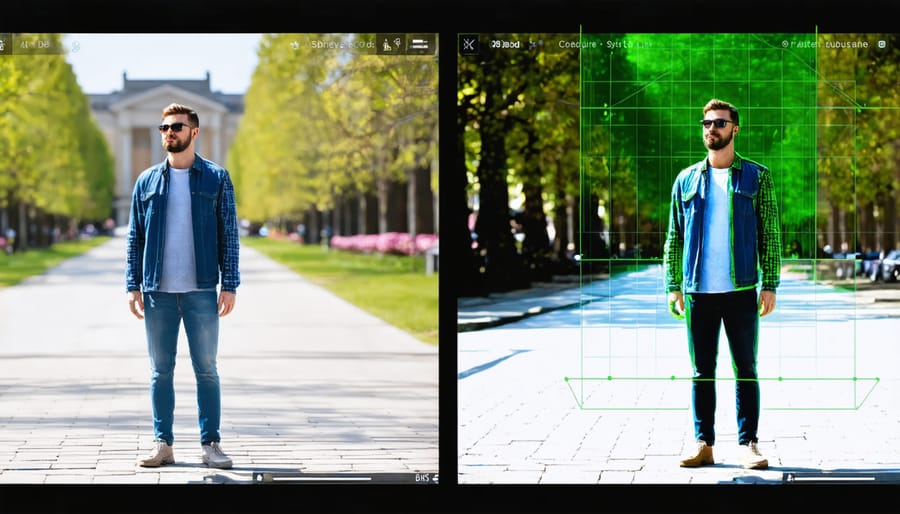
Computational Photography Breakthroughs
Computational photography has revolutionized how we capture and process images, with AI-powered algorithms transforming what’s possible with modern cameras. The latest breakthrough comes in the form of multi-frame synthesis, where cameras capture several images in rapid succession and combine them intelligently to create a single, superior photograph.
Leading manufacturers have developed sophisticated AI systems that can analyze scenes in real-time, adjusting settings before you even press the shutter. These systems can recognize faces, objects, and scenarios, optimizing exposure and focus parameters accordingly. For instance, the latest computational systems can capture up to 20 frames in a fraction of a second, analyzing each for optimal sharpness, exposure, and detail.
Perhaps the most impressive advancement is in low-light photography. Through AI-enhanced image processing, cameras can now produce clear, detailed images in conditions that would have been impossible just a few years ago. The technology works by combining multiple exposures and using machine learning to reduce noise while preserving natural colors and textures.
Portrait photography has seen particular benefits from these developments. Advanced depth mapping and facial recognition algorithms create more natural-looking background blur, while skin tone preservation algorithms ensure consistent and flattering results across various lighting conditions. Some systems can even detect and correct unflattering expressions or closed eyes by seamlessly combining elements from multiple frames.
Smart HDR processing has also evolved significantly, with AI now capable of creating more natural-looking high dynamic range images by selectively adjusting different areas of the frame based on content recognition. This results in photographs that better match what the human eye sees, with detailed shadows and preserved highlights that maintain a realistic appearance.
Revolutionary Sensor Technology
Quad-Layer Sensor Architecture
The latest breakthrough in digital imaging comes in the form of revolutionary sensor technology that employs a quad-layer design, fundamentally changing how cameras capture light and color. Unlike traditional sensors with a single layer of photosites, this new architecture stacks four distinct layers, each optimized for different light conditions and color spectrums.
The top layer captures highlights and bright details, while the second layer specializes in mid-tones. The third layer excels in shadow detail capture, and the bottom layer is dedicated to extreme low-light performance. This intelligent division of labor allows the sensor to capture an unprecedented dynamic range of up to 18 stops, surpassing even the capabilities of the human eye.
What makes this technology particularly exciting for photographers is its ability to handle challenging lighting conditions that traditionally required multiple exposures or complex post-processing. Wedding photographers, for instance, can now capture both the intricate details of a white dress and the subtle shadows in dark formal wear within a single frame.
The quad-layer design also introduces advanced noise reduction capabilities. Each layer processes light independently, resulting in cleaner images even at high ISO settings. Night photographers will appreciate the ability to shoot at ISO 12800 and above while maintaining impressive detail and color accuracy.
Color reproduction has also taken a significant leap forward. The layered approach allows for more precise color separation, resulting in more accurate skin tones and subtle color gradations. Landscape photographers will notice richer blues in skies and more nuanced greens in foliage, while portrait photographers can capture true-to-life skin tones across different lighting conditions.
This technology represents not just an incremental improvement but a fundamental shift in how digital cameras capture images, bringing us closer to the holy grail of photography: the perfect balance between dynamic range, color accuracy, and low-light performance.
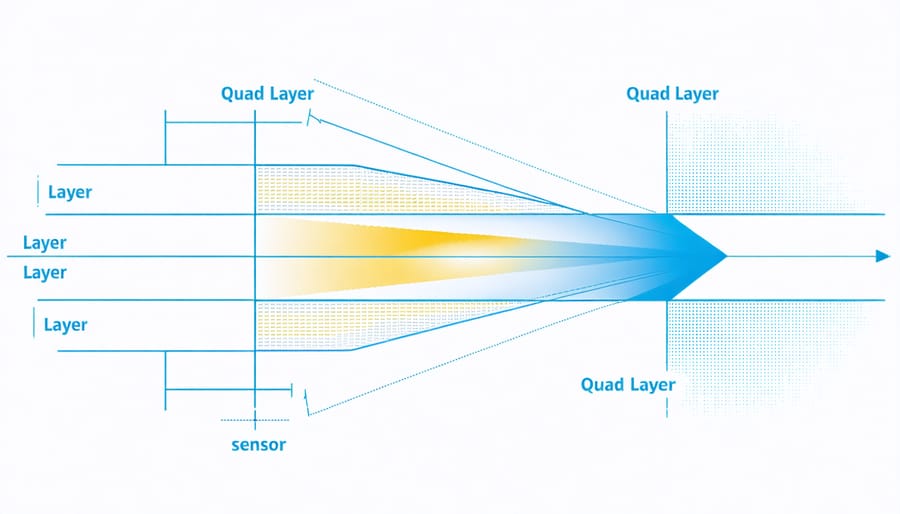
Global Shutter Revolution
The photography world is witnessing a quiet revolution with the widespread adoption of global shutter technology, marking a significant leap forward from traditional rolling shutters. Unlike its predecessor, which captures images line by line, global shutter sensors expose the entire frame simultaneously, eliminating the dreaded rolling shutter effects that can distort fast-moving subjects.
For action photographers, this advancement is nothing short of revolutionary. Imagine capturing a race car at full speed without any skewing or capturing a baseball player’s bat mid-swing with perfect geometric precision. Global shutter technology ensures that every element in your frame maintains its true shape, regardless of how fast it’s moving.
Video creators are particularly benefiting from this innovation. Gone are the days of wobbling drone footage or the “jello effect” in handheld shots. Global shutter sensors provide buttery-smooth motion capture, making them ideal for everything from sports broadcasting to high-speed industrial documentation.
The technology’s impact extends beyond just correcting visual artifacts. Modern global shutter sensors now offer exceptional light sensitivity and dynamic range, rivaling their rolling shutter counterparts. This means photographers no longer have to choose between motion accuracy and image quality – they can have both.
Real-world applications are already showing promising results. Sports photographers report capturing clearer images of fast-breaking plays, while cinematographers praise the natural motion rendering in high-speed scenes. Drone operators particularly appreciate how global shutter cameras eliminate propeller distortion in aerial footage.
However, it’s worth noting that this technology comes at a premium. The manufacturing process for global shutter sensors is more complex, resulting in higher costs. But as the technology matures and becomes more widespread, we’re seeing more affordable options enter the market, making this game-changing feature accessible to a broader range of creators.
Looking ahead, global shutter technology is poised to become the new standard in digital imaging, especially as action photography and high-speed videography continue to push the boundaries of what’s possible with modern cameras.
Connectivity and Cloud Integration

5G Integration and Real-Time Transfer
The integration of 5G technology in modern cameras has revolutionized how photographers capture and share their work. With data transfer speeds up to 100 times faster than 4G, professional photographers can now instantly upload high-resolution images and 8K video footage directly from their cameras to cloud storage or clients’ servers.
Leading camera manufacturers have embraced this technology by incorporating 5G modules into their flagship models. For instance, photographers covering live events can transmit RAW images to their editing team in real-time, enabling immediate post-processing and publication. This capability has transformed sports photography and photojournalism, where timing is crucial.
The real-time transfer feature isn’t just about speed – it’s about workflow efficiency. Photographers can now backup their work automatically as they shoot, reducing the risk of data loss and eliminating the need for physical storage transfers. Some cameras even offer built-in live streaming capabilities, allowing content creators to broadcast high-quality footage directly to social media platforms or private channels.
However, it’s worth noting that 5G integration does impact battery life and can add to the camera’s weight. Many photographers are finding the trade-off worthwhile, though, as the ability to instantly deliver professional-quality images to clients or share breaking news photos with news agencies has become increasingly important in our connected world.
Cloud-Native Workflows
Today’s cameras are revolutionizing the way photographers manage and edit their work through seamless cloud integration. Gone are the days of manually transferring files – modern cameras now automatically sync your photos to cloud storage platforms the moment you capture them, thanks to built-in Wi-Fi and cloud-based smart integration capabilities.
Leading manufacturers have partnered with major cloud service providers to offer dedicated storage solutions. For instance, Sony’s Imaging Edge platform and Canon’s image.canon service provide photographers with automatic backup, RAW file support, and seamless integration with editing software. These platforms not only secure your precious shots but also enable real-time collaboration with clients or team members.
Mobile editing has become more sophisticated, with AI-powered tools that can handle complex adjustments right from your smartphone. Photographers can now start editing their work while still on location, making quick adjustments or sharing previews with clients immediately after a shoot.
What’s particularly exciting is the emergence of cloud-based preset synchronization. Your carefully crafted editing styles and camera settings can now follow you across devices, ensuring consistency in your workflow whether you’re shooting with your main camera or a backup body. This level of integration has transformed the way professionals approach their craft, making complex workflows more efficient and accessible than ever before.
Sustainable Photography Tech
Eco-Friendly Materials and Manufacturing
The photography industry is experiencing a significant shift towards environmental consciousness, with manufacturers increasingly adopting sustainable camera materials and eco-friendly production methods. Leading brands like Sony, Canon, and Nikon are now incorporating recycled materials in their camera bodies, with some models featuring shells made from reclaimed ocean plastics and bio-based components.
These innovations extend beyond just the camera bodies. Lens manufacturers are developing glass elements using lead-free materials, while camera straps and cases are being crafted from sustainable alternatives like hemp and recycled polyester. Even memory card manufacturers are joining the movement, creating products with biodegradable components and reducing plastic packaging.
The manufacturing process itself is undergoing a green revolution. Production facilities are increasingly powered by renewable energy, with some facilities achieving carbon neutrality through solar and wind power integration. Water conservation efforts have led to closed-loop cooling systems in lens manufacturing, while automated production lines reduce energy consumption and material waste.
Camera companies are also addressing the end-of-life cycle of their products. Many now offer trade-in programs where old equipment is either refurbished or properly recycled. Some manufacturers have implemented modular designs that allow for easier repairs and component replacements, extending product lifespans and reducing electronic waste.
This shift towards sustainability hasn’t compromised product quality. In fact, many eco-friendly materials have proven to be more durable and weather-resistant than their traditional counterparts. For instance, magnesium alloy bodies made from recycled materials offer the same rigidity and lightweight properties as those made from virgin materials, while bio-based grip materials provide improved handling characteristics.
The industry’s commitment to environmental responsibility is reflected in new packaging solutions as well, with brands moving away from plastic packaging in favor of recyclable and biodegradable alternatives. This holistic approach to sustainability is setting new standards for the camera industry while meeting the growing demand for environmentally conscious products.
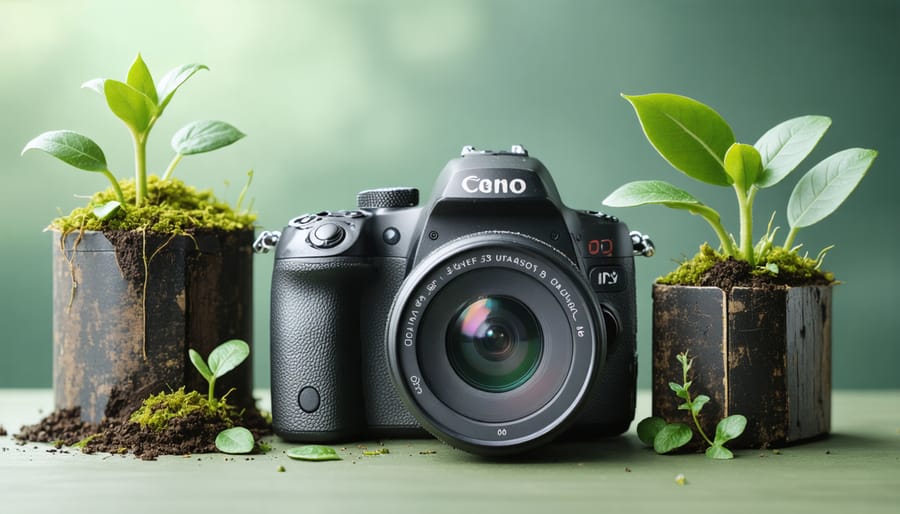
Energy Efficiency Innovations
As photographers, we’re increasingly conscious of our environmental impact, and camera manufacturers are responding with innovative energy-efficient solutions. Modern cameras are incorporating sophisticated power management systems that significantly extend battery life without compromising performance.
One of the most notable advances is the implementation of intelligent sleep modes that can reduce power consumption by up to 70% compared to previous generations. These systems automatically detect periods of inactivity and selectively power down non-essential components while maintaining quick startup capabilities.
Several manufacturers have introduced eco-friendly batteries with higher energy density and improved charging efficiency. For instance, the latest lithium-ion batteries now feature smart charging algorithms that optimize power delivery and prevent overcharging, extending both battery life and overall efficiency.
Solar charging solutions are gaining traction, particularly among wildlife and adventure photographers. Portable solar panels designed specifically for camera gear can now charge batteries and power equipment in remote locations. Some manufacturers have even integrated small solar cells directly into camera bags and cases, providing trickle charging capabilities during outdoor shoots.
USB-C Power Delivery has revolutionized camera charging, allowing photographers to use universal power banks and reducing the need for multiple proprietary chargers. This standardization not only improves convenience but also reduces electronic waste.
Electronic viewfinders (EVFs) have seen remarkable efficiency improvements, with new OLED technology consuming up to 50% less power than earlier models while delivering superior image quality. Some cameras now feature adaptive brightness controls that automatically adjust EVF intensity based on ambient light conditions.
Perhaps most exciting is the emergence of energy-harvesting technologies. Several prototypes are exploring ways to convert camera motion and heat into usable power, potentially extending shooting time without requiring additional batteries. While still in development, these innovations suggest a future where cameras might become partially self-sustaining during active use.
The rapid evolution of camera technology continues to reshape how we capture and experience the world around us. From groundbreaking AI capabilities that enhance our creative possibilities to sophisticated computational photography systems that push the boundaries of what’s possible, we’re witnessing a revolutionary period in imaging technology. These advancements aren’t just improving image quality; they’re fundamentally changing how photographers approach their craft.
As we look toward the future of photography, the integration of artificial intelligence, computational imaging, and sustainable practices promises even more exciting developments. Cameras are becoming increasingly intelligent tools that adapt to our needs while maintaining the essential connection between photographer and subject. The shift toward more sustainable manufacturing processes and eco-friendly materials also signals a positive direction for the industry.
For both professional photographers and enthusiasts, these technological advances mean greater creative freedom, improved efficiency, and new possibilities for expression. While some may worry about automation replacing artistic judgment, the reality is that these tools are enhancing rather than limiting creative control. As camera technology continues to evolve, the fundamental goal remains unchanged: empowering photographers to tell their stories more effectively and create compelling images that resonate with viewers.
